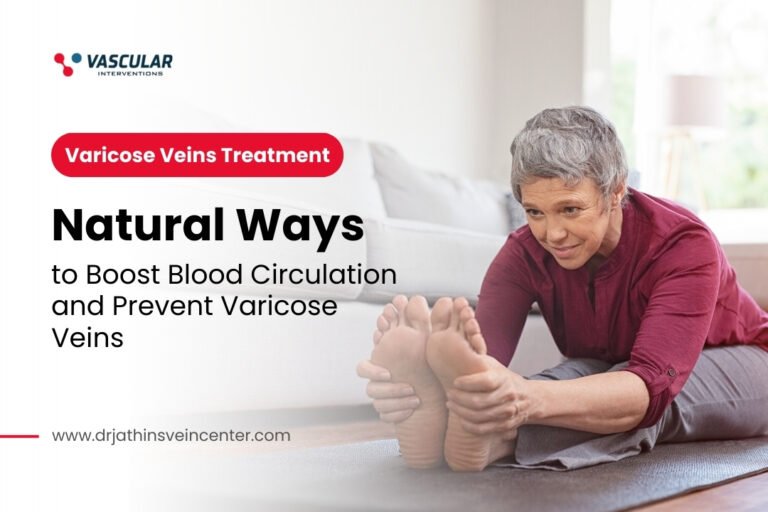What is a Varicose Vein?
Varicose veins are a condition that develops when the main vein in your leg becomes enlarged and twisted. The condition is often seen in people who have had a long-term illness or who have been pregnant. It can also develop after a long stay on your feet.
They are most often caused by damage to valves in the lower leg that allow blood to flow backward. A person is more likely to get varicose veins if they have a family history of them, if they have had a lot of pregnancies or if they stand for long periods of time – especially on hard surfaces like concrete or tile floors.
Varicose veins usually don’t cause any pain, but they can make you feel uncomfortable and tired. They usually develop slowly, but the veins can sometimes grow suddenly larger and become more painful. Varicose veins are more common in women than men, and they’re most likely to happen in people over the age of 50 or 60 years old.
Experts believe varicose veins are caused by weakened valves within the vein wall which allows blood to flow back towards the heart instead of away from it.
Stage 1: Diagnosis and Examination
Varicose veins are a common form of venous disease. It is characterized by swollen, twisted, and enlarged veins in the legs that can cause pain and discomfort.
Doctors usually diagnose the disease through a physical examination and imaging studies (such as ultrasound or x-ray).
Varicose veins may also be diagnosed by an examination of the legs. Signs of varicose veins include tiredness in the legs, swelling, itching, burning sensations in the legs, leg cramps, and heaviness in the legs. Varicose veins are a complication of pregnancy and hormonal changes, aging, and genetics. These veins can also be caused by standing for long periods of time, abnormal weight gain or loss, pregnancy, oral contraceptives, diuretics, or other medications that interfere with water balance in the body.
Some people get lightheadedness or dizziness when standing or sitting for long periods of time because blood pools in their feet which decreases their blood pressure; this can lead to fainting spells.
Stage 2: Initial Treatment Options and Their Risks/Resolutions
Varicose veins are one of the most common venous conditions located in the lower legs. They have been attributed to a number of causes. Experts say that anyone can develop them. The age group that is most at risk is the 65 and up the crowd.
Varicose veins are an unfortunate side effect of the anatomy of the human body. When blood vessels in our legs are not able to push blood up to our heart, they can become varicose and enlarged.
Veins are a significant factor in the health of the body. They provide oxygenated blood to all parts of the body, delivering nutrients and removing toxins. These veins have a much higher risk of becoming clotted or twisted, leading to dangerous medical conditions that can be life-threatening if left untreated. It’s important to maintain good vein health by eating healthy, maintaining proper hydration levels, and taking care of your feet, as healthy veins reduce the risks of complications such as varicose veins and blood clots.
Varicose veins are a common condition that affects many people. They may be found on the legs and sometimes the arms. There different types of varicose veins and treatments for them, depending on where they are located and how severe they are.
When deciding on the course of treatment, it is important to consider the possible risks and potential resolutions to decision-making. Without understanding the risks you are taking with potential treatments, you may experience worse or no results. It is essential that you find a doctor who will listen to your concerns and answer your questions before proceeding with any course of action.
Initial treatments for varicose veins vary depending on the severity and how long they’ve been present in a person. Mild cases may only require periodic compresses to reduce inflammation and pain. Severe cases can result in surgery to restore circulation in the legs and feet or permanent venous insufficiency that requires lifelong treatment with compression stockings or medication.
Stage 3: Preventing Reoccurrence of Varicose Veins Through Lifestyle Changes and Regular Checkups
Varicose veins are a common and bothersome condition of the lower limbs and can be prevented by making lifestyle changes and getting regular checkups.
Varicose veins are caused by the dilation (widening) of veins in the legs that carry blood back to the heart. Varicose veins are increasing in the population due to the rise of obesity rates and prolonged sitting. Often they are found in adults who are middle-aged or older.
There are some lifestyle changes that you can make to minimize risk factors for varicose vein development: smoking cessation, weight loss, reducing alcohol consumption, and increasing physical activity.
If you notice a change in the color, size, shape, or appearance of your leg veins, it is important to visit a doctor. They can help diagnose what condition you have and recommend ways to treat it.





